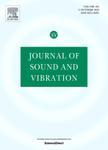版权所有:内蒙古大学图书馆 技术提供:维普资讯• 智图
内蒙古自治区呼和浩特市赛罕区大学西街235号 邮编: 010021

作者机构:Guangzhou Univ Earthquake Engn Res & Test Ctr MOE Key Lab Earthquake Resistance Earthquake Miti Guangzhou 510405 Peoples R China Guangzhou Univ Guangdong Prov Key Lab Earthquake Engn & Appl Tec Guangzhou 510405 Peoples R China Jinan Univ Sch Mech & Construct Engn MOE Key Lab Disaster Forecast & Control Engn Guangzhou 510632 Peoples R China Taiwan Natl Univ Dept Civil Engn Taipei 10617 Taiwan
出 版 物:《JOURNAL OF SOUND AND VIBRATION》 (声音与振动杂志)
年 卷 期:2020年第473卷第0期
页 面:115233-000页
核心收录:
学科分类:07[理学] 082403[工学-水声工程] 08[工学] 070206[理学-声学] 0802[工学-机械工程] 0824[工学-船舶与海洋工程] 0801[工学-力学(可授工学、理学学位)] 0702[理学-物理学]
基 金:National Key Research & Development Program of China [2017YFC0703600] Natural Science Foundation of China Natural Science Foundation of Guangdong Province [2016A030313544] Pearl River Science & Technology Nova Program of Guangzhou
主 题:Nonlinear energy sink Magnetic force Transient internal resonance Targeted energy transfer Seismic control
摘 要:In this paper, a magnetic bi-stable NES (MNES) is proposed for structural seismic control. Permanent magnets are configured to generate noncontact and smooth bi-stable restoring force for the present MNES device, by which the transient internal resonance between the primary structure and the attached MNES can be rapidly enhanced under seismic excitation. The governing equation of the present MNES is derived, and the numerical parameter optimization is carried out for its implementation in seismic control for a shear frame model. Seismic performance of this frame structure attached with the proposed MNES is evaluated, and compared to those of cubic NES and linear tuned mass damper (TMD) systems. As shown in the results, the proposed MNES is found to be robustly capable of protecting the shear frame under seismic excitations. Immediate cascade of broadband transient internal resonance captures under seismic excitations are found as the essential cause of the high efficiency of the present MNES system. (C) 2020 Elsevier Ltd. All rights reserved.